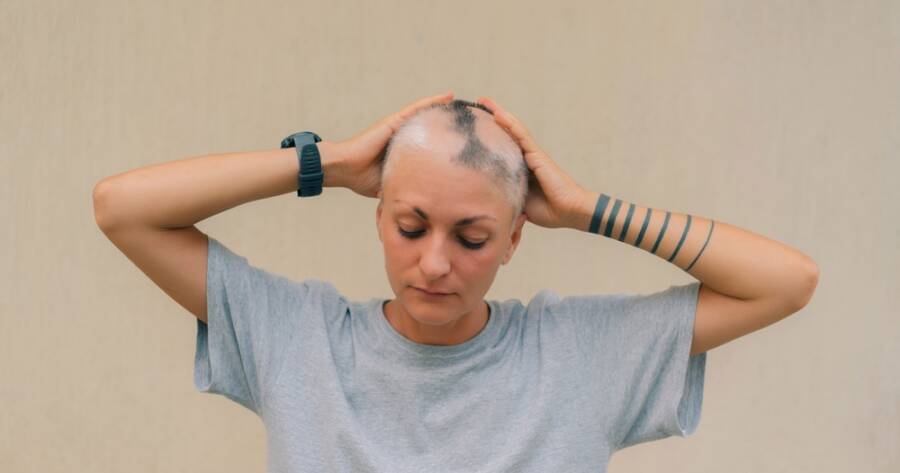Alopecia areata, a complex autoimmune disorder, results in sudden, unpredictable hair loss affecting people across all demographics. With genetic and environmental factors playing key roles, understanding its causes, risk factors, and treatments is essential for effective management. This condition also impacts psychological well-being, making comprehensive awareness crucial for both patients and healthcare providers. Delve into the intricacies of alopecia areata to uncover strategies for managing its physical and emotional challenges while enhancing quality of life.
Understanding Alopecia Areata
Alopecia areata is a complex autoimmune disorder that primarily affects hair follicles, leading to sudden and unpredictable hair loss. This condition can manifest as small, round patches of hair loss mainly on the scalp but can also occur on other parts of the body, including the face and arms. It affects people across all demographics and age groups, with a predilection for teens to those in their thirties, and it is recognized as the leading form of hair loss among children. The disorder stems from a malfunction in the immune system, which mistakenly targets hair follicles.
Causes and Triggers of Alopecia Areata
The exact causes of alopecia areata remain not fully understood, although genetic factors are pivotal, especially regarding the condition’s appearance in family genomes. Studies highlight that about 20% of individuals with alopecia areata have a family member who is also affected by the condition. Environmental factors and genetic predispositions, particularly specific genes within the human leukocyte antigen (HLA) complex, contribute to this disease manifestation. Other potential triggers might include significant stress, physical injuries, or illness, which could prompt an autoimmune response targeting the hair follicles. Additionally, the presence of other autoimmune diseases can further exacerbate the onset of alopecia areata.
Diagnosis and Risk Factors
Diagnosing alopecia areata involves a medical history review and may involve observing the pattern of hair loss. In some cases, a scalp biopsy could be performed to confirm the diagnosis and understand the hair follicle status. The likelihood of developing alopecia areata increases in individuals with a familial history of the condition, noting familial genetic predispositions. Lifestyle factors like smoking have been shown to increase the risk, with long-term smokers particularly susceptible. When it comes to demographic details, the condition affects roughly 2% of people globally, with certain populations, like African Americans, showing higher prevalence rates. It’s essential to understand that while intense stress and crises aren’t direct causes, they may trigger a more aggressive autoimmune attack on hair follicles.
Impact on Life and Psychological Well-being
Alopecia areata extends beyond physical symptoms, bringing profound psychological and emotional impacts due to its visible nature. Individuals with the disorder often experience significant stress and a sense of trauma related to changes in their appearance and public perception. Psychological support, including counseling services and support groups, can be vital in mitigating these emotional challenges. Understanding and empathy from loved ones and professional counseling can significantly help individuals cope with the stress and mental burden associated with the condition.
Treatment and Hair Regrowth Strategies
While alopecia areata cannot be cured, various treatment options are available to stimulate hair regrowth and manage progression. These options include corticosteroids, immunosuppressants, and JAK inhibitors like Olumiant (baricitinib) adapted depending on the severity of hair loss and the patient’s age. Despite these treatments, no solution guarantees effectiveness, with a significant percentage of individuals experiencing natural hair regrowth without medical intervention. Topical sensitizers, systemic therapies, and advanced immunotherapy are utilized to address hair regrowth and alter the immune response. Interestingly, recovery varies widely, with some experiencing spontaneous regrowth and others facing chronic loss cycles, reflecting the unpredictability of this condition.
Prevention and Ongoing Management
Preventive measures emphasize managing potential triggers, such as minimizing emotional stress and avoiding harmful hair treatments. Continuous management involves lifestyle adjustments, maintaining healthy nutrition, and possibly avoiding environmental triggers that may instigate symptoms. Medical management may include topical treatments or medications that aim to modify the immune response and induce hair regrowth. Those with significant hair loss might consider utilizing wigs and hairpieces, while engaging with resources like the National Alopecia Areata Foundation, which offers information and support.
Why You Should Learn More About Alopecia Areata Today
As alopecia areata significantly affects individuals’ quality of life, understanding the potential causes, risk factors, and treatment options is crucial for both patients and healthcare providers. With unpredictable hair loss playing a profound role in physical appearance and mental well-being, awareness and support are vital. Resources are available to those affected, offering guidance in health management, treatment options, and emotional support. Being informed can empower those dealing with alopecia areata to make better health decisions, utilize suitable therapies, and reduce potential stressors, ultimately improving their quality of life.
Sources
Comprehensive Overview of Alopecia
Understanding Alopecia Areata Symptoms
